
< More Photonics Spectra Monthly NewsletterSubscribe to our E-NewslettersPhotonics Spectra Monthly — Single-Photon Avalanche Photodiodes, Raman Spectroscopy, Femtosecond Lasers, and more. (5/11/2022)
Photonics Spectra Monthly — Single-Photon Avalanche Photodiodes, Raman Spectroscopy, Femtosecond Lasers, and more.
Monthly newsletter from the editors of Photonics Spectra, with features, popular topics, new products, and what's coming in the next issue.
| If you are having problems seeing this newsletter, please click here to view |

|
Monthly newsletter from the editors of Photonics Spectra, with features, popular topics, new products, and what's coming in the next issue. Manage your Photonics Media membership at Photonics.com/subscribe.
|
|
A New Generation of Femtosecond Lasers Packs Practicality with Precision
To say that femtosecond laser technology has undergone a transformation in recent years is an understatement that not only minimizes the huge strides made in technical terms, but especially so the improvements in accessibility. Complex tabletops crowded with user-built assemblies and myriad discrete optics requiring daily attention have given way to single-box systems tailored to meet the fast-changing world of femtosecond applications. Early examples of this transition are tunable lasers for multiphoton microscopy, rapidly followed by powerful industrial one-box lasers developed to support micromachining applications ranging from stent cutting to OLED processing.
|
|
|
|
|
Single-Photon Avalanche Diodes Sharpen Spatial and Temporal Resolution
As their name implies, single-photon avalanche diodes (SPADs) detect single particles of light, and they do so with picosecond precision. Single-pixel SPADs have found wide use in astronomy, flow cytometry, fluorescence lifetime imaging microscopy, particle sizing, quantum computing, quantum key distribution, and single-molecule detection. Over the last 10 years, however, SPAD technology has evolved through the use of standard complementary metal-oxide-semiconductor technology. This paved the way for arrays and image sensor architectures that could increase the number of SPAD pixels in a compact and scalable way.
|
|
|
|
|
Raman Spectroscopy’s Signals and Future Continue to Get Brighter
Spurred by the passage of state legislation last fall, the Southern California Coastal Water Research Project issued a methodology for monitoring microplastics in drinking water. The California regulation was the first of its kind in the U.S. to address widespread microplastic pollution in the environment. In response, an international group of scientists came together to develop guidelines for implementing the regulation, and they identified Raman spectroscopy as a key technique for the chemical identification of microplastics in water.
|
|
|
|
|
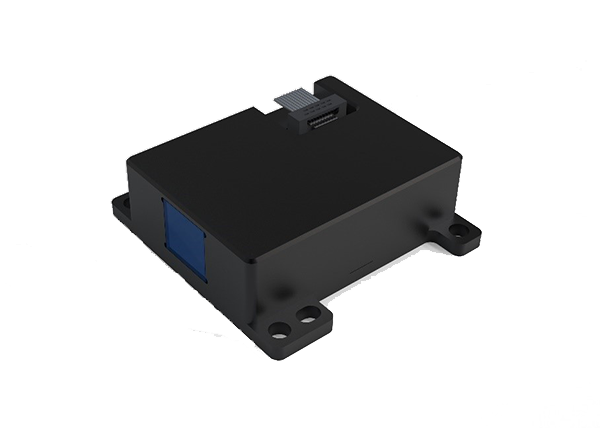 High Performance Line Beam LiDAR Tx
High Performance Line Beam LiDAR Tx
Focuslight Technologies Inc.
Coupled with a mechanical rotating mirror and a novel SiPM or SPAD array on the detector end, Focuslight BeamRazor™ series LiDAR transmitter family enables a new generation hybrid solid-state high-resolution beam steering LiDAR of line beam concept.
|
|
|
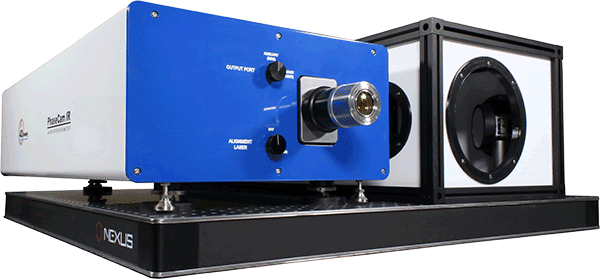 PhaseCam MWIR
PhaseCam MWIR
4D Technology Corporation
PhaseCam MWIR is a dual-port, midwave infrared interferometer that measures optical surface shape and wavefront error at a 3.39 µm infrared wavelength with incredibly fast acquisition for vibration and turbulence immunity.
|
|
|
|
| |
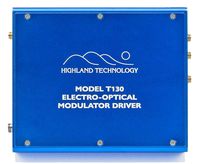 Single-channel Picosecond EOM Driver
Single-channel Picosecond EOM Driver
Highland Technology Inc.
The T130 is a USB/RS-232 enabled pulse generator suitable for driving LiNbO3 Mach-Zehnder and similar electro-optical devices. It has a built-in edge-triggered width generator that is adjustable for delay and width, spanning 250 picoseconds to 300 nanoseconds across three ranges.
|
|
|
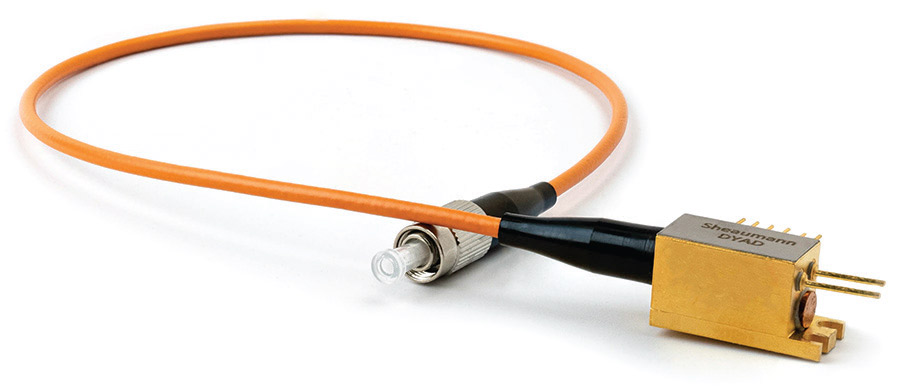 DYAD Dual-Beam Laser Module
DYAD Dual-Beam Laser Module
Sheaumann Laser Inc.
This is a fiber-coupled module featuring an operational beam and an optical red aiming beam. It’s well suited for many medical applications as well as range-finding, illumination systems, and industrial marking. Internal thermistor and photodiode.
|
|
|
|
| |
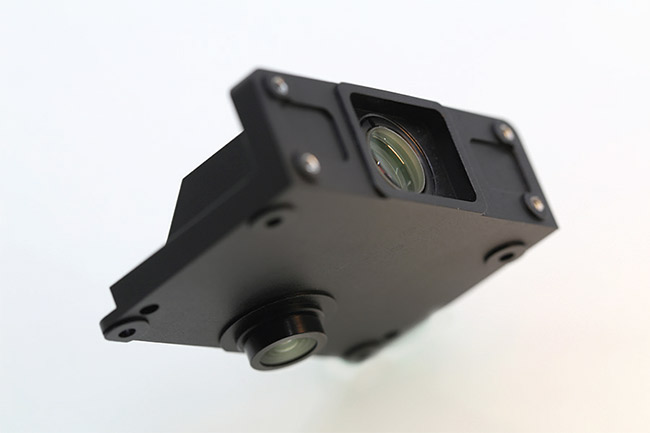 Precision LiDAR Lens Assembly
Precision LiDAR Lens Assembly
Hyperion Optics USA
Hyperion offers real-time dynamic centering techniques during lens assembly, which dramatically improve the accuracy of the LiDAR lens to match the intended design performance, with results guaranteed by quantitative MTF measurements. Our capabilities include assembly, metrology, and volume capacity for high-precision...
|
|
|
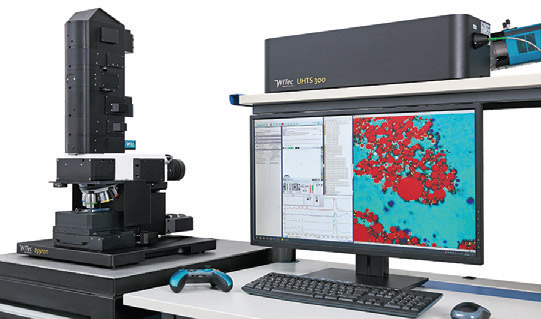 Fully Automated Raman Imaging
Fully Automated Raman Imaging
WITec GmbH
The new WITec alpha300 apyron now takes 3D Raman imaging automation to the next level. It combines ease-ofuse and ultimate capability for reproducible results with unrivaled speed, sensitivity, and resolution. It can self-align and self-calibrate for speed and consistency while also substantially reducing the...
|
|
|
|
| |
|
Modular Waveguide Represents Step Toward Faster Quantum Computers
Researchers at the University of Tokyo generated strongly nonclassical light using a modular waveguide-based light source. The demonstration, which the researchers said is the first of its kind, is poised to benefit future work aimed at creating faster and more practical optical quantum computers.
|
|
|
|
A microscopy method developed at the University of Freiburg is able to resolve cellular-level detail without fluorescence, enabling observations 100 to 1000× longer and 10 to 100× times faster, with almost double the resolution. The technique is called rotating coherent scattering (ROCS).
|
|
A phenomenon observed in a miniature light-scattering system composed of an ultrathin layer of silicon nitride on a chip could lead to improved optical communications and sensors. Researchers at the National Institute of Standards and Technology studied such a system, which was additionally etched with a series of closely spaced, periodic grooves. The grooves created a grating that scatters different colors of light at different angles, while the silicon nitride acts to confine and guide incoming light as far as possible along the 0.2-cm length of the grating.
|
|
|
 Optical Solutions for Spectroscopic Water Analysis
Optical Solutions for Spectroscopic Water Analysis
Thu, May 19, 2022 1:00 PM - 2:00 PM EDT
Light can be used in many ways to understand, study, and spectroscopically characterize the components that may exist in water. Stephane Butron and Erik Mesa of Hamamatsu Corp. discuss the various markets that benefit from such measurement, the photonic tools currently available to perform such measurement, and how users can select tools for specific applications. They then present a live demonstration that shows how measurement can be done with Hamamatsu Photonics K.K.'s spectrometers and xenon flash lamp modules. Presented by Hamamatsu Corp.
|
|
|
|
Features
Laser Processing, Photonic Integrated Circuits, Raman Spectroscopy, Lighting in Machine Vision, and more.
Photonics Media is currently seeking technical feature articles on a variety of topics for publication in our magazine Photonics Spectra. Please submit an informal 100-word abstract to Daniel McCarthy, Senior Editor, at [email protected], or use our online submission form www.photonics.com/submitfeature.aspx.
|
|
|
|
About Photonics Spectra
 Since 1967, Photonics Spectra magazine has defined the science and industry of photonics, providing both technical and practical information for every aspect of the global industry and promoting an international dialogue among the engineers, scientists and end users who develop, commercialize and buy photonics products.
Since 1967, Photonics Spectra magazine has defined the science and industry of photonics, providing both technical and practical information for every aspect of the global industry and promoting an international dialogue among the engineers, scientists and end users who develop, commercialize and buy photonics products.
Visit Photonics.com/subscribe
to manage your Photonics Media membership.
View Digital Edition
Manage Membership
|
|
|
|
